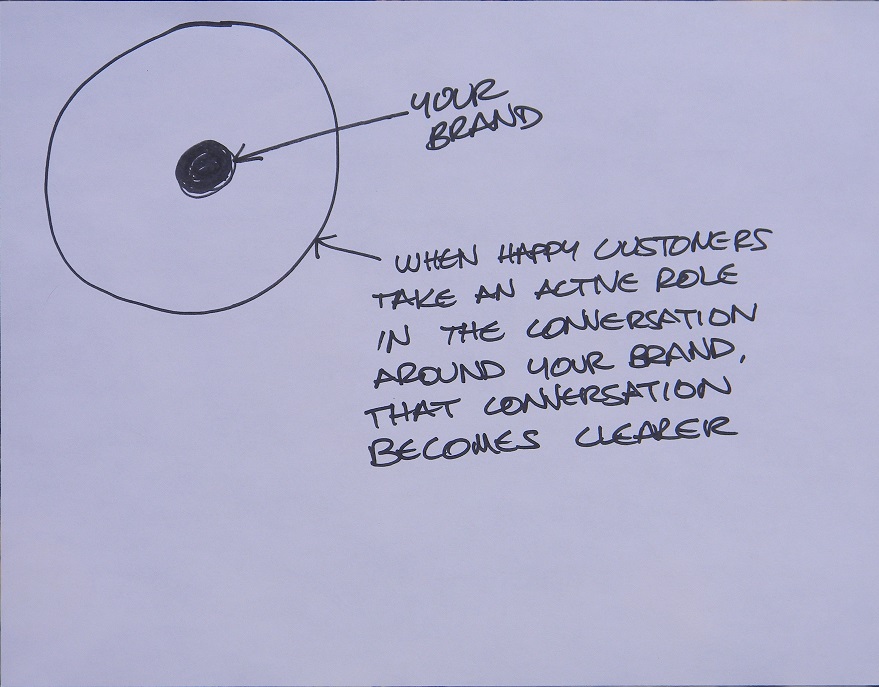Found this over on Mack Collier — he’s a good dude and runs #BlogChat, which I should probably contribute to more — about “clean” and “dirty” conversations in the marketing space. Before you excited and think some brand is gonna start talking sexy to you, that’s not the actual point. Rather, here’s how most brands deal with the idea of social and conversations:
That’s a “dirty” conversation. You got your brand in the middle, and conversations are going on around your brand, but the brand itself isn’t weighing in. It’s unbelievable to me that most brands will share, tweet, etc. something and then when a conversation emerges around it — they don’t respond back to the participants at all. What’s doubly amazing about that is that most brands encourage you to follow them on social by saying “Join The Conversation!,” but then they themselves don’t join the conversation. Weird. That’s “dirty marketing.” Other people are talking about you, and by definition, other people are shaping the perceptions and dialogue.
Here’s “clean marketing,” whereby the conversation is a bit more controlled by you:
This is akin to what everyone’s favorite business case study company (Apple) does with marketing: they actually leave out key information when they market/sell something, and they let their “brand ambassadors” — “influencers,” essentially — fill in that information.
This is also similar to something I saw on Shark Tank recently, where Buck Mason came in and pitched their clothing, and Robert (shark) had no idea how they were getting customers, even though they were explaining an Instagram Influencer program:
Here’s the thing we need to consider next, right?
Marketing often has a problem with worshipping at “The Shrine Of Big Numbers.” So this clean/dirty discussion might not matter to CMOs and marketing managers if it can’t be tied to “Well, we can put bigger numbers in front of our bosses.” That’s ultimately what everyone is chasing, right?
Here’s where this new idea comes in: there’s a tipping point for the spread of ideas. Basically, if 10 percent of a population holds an unshakeable belief, that’s all it takes to influence the majority of the same belief.
So think about that: let’s say you put something out in the world to sell or market, right? If you can convince 10 out of 100 people exposed to it that it’s a good idea/concept and get them to buy in and showcase it to others, right there … with just 10 people … you can suddenly have an audience of about 51 people. Now, these are small numbers — no one wants to go their marketing VP and say, “Hey, we drove 51 leads into the funnel!,” because that will probably get your ass chewed out (even though no one really understands what the funnel is anymore).
This is essentially what Apple does, as I said above: “clean marketing” around influencers and passionate minorities. Those things, plus a good product — er, good experience related to product — can drive your brand to new heights.
TL:DR Rather than chasing big numbers and impressions, chase a passionate minority and engage in a dialogue with them. It will benefit you.



Reblogged this on Gr8fullsoul.